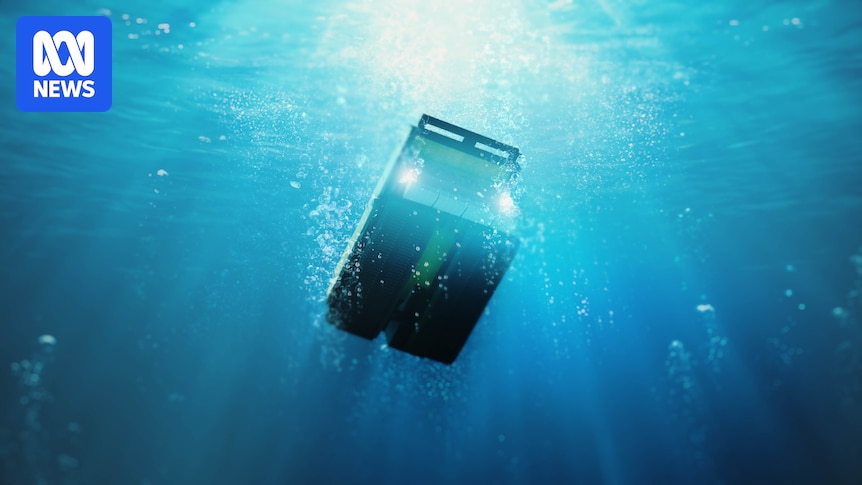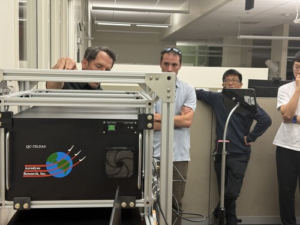
The yellow robot perched on the side of a research vessel is about to embark on a journey into the depths of the Pacific Ocean. Its mission: to recover polymetallic nodules, rock-like lumps filled with critical minerals such as nickel, copper, cobalt, and manganese. These nodules, millions of years old, lie more than 4 kilometers below the ocean’s surface, beyond the reach of sunlight.
This deep-sea mining initiative has become a global flashpoint, with countries and companies vying to open a new frontier in resource extraction. Proponents argue that these minerals are essential for transitioning from fossil fuels to clean energy technologies. Nickel and cobalt are crucial for electric car batteries, while manganese is vital for steel production.
The Race to the Ocean Floor
Efforts to extract these nodules sustainably and equitably have been ongoing for decades. However, former US President Donald Trump sought to expedite the process, aiming for America to capitalize on this potential multi-trillion-dollar industry. His administration pushed for fast-tracking undersea mining, even without a global consensus.
Until now, the collection of these nodules has been limited to testing phases. The process involves a robot navigating the sea floor, vacuuming up nodules, and sending them to the surface for processing. This new frontier is primarily located in the Clarion-Clipperton Zone (CCZ), a vast area of the Pacific Ocean larger than Queensland and Western Australia combined.
Regulatory Challenges and Environmental Concerns
The International Seabed Authority (ISA), a UN-affiliated agency, grants exploration contracts for potential mining areas in the CCZ. Seventeen operators have been authorized to map and search these areas. Under international law, the ISA is responsible for regulating deep-sea resource mining while ensuring environmental protection and equitable benefit sharing. However, comprehensive regulations are still under development.
The deep ocean is home to some of the world’s oldest and most unique species. Marine scientists caution that mining could disrupt these ecosystems. The process creates sediment plumes that may affect marine life far beyond the mining zones. Environmentalists and scientists advocate for more research before proceeding with commercial mining.
“What lies in the deep sea does not belong to any one nation or corporation, but to all of us and future generations.” — Palau President Surangel Whipps Jr.
Geopolitical Tensions and Economic Interests
The absence of the United States from the UN’s Convention on the Law of the Sea complicates the situation. Trump’s executive order in April aimed to expedite deep-sea mining licenses in US and international waters, including the CCZ. This move could potentially breach international law and spark geopolitical tensions, with countries like Australia possibly drawn into the fray.
China’s dominance in processing critical minerals and rare earths is a significant factor driving US interest in seabed mining. The Trump administration viewed these resources as vital for national security and economic development. Meanwhile, Pacific nations such as Palau call for a moratorium or precautionary pause on deep-sea mining, fearing irreversible environmental impacts.
The Future of Deep-Sea Mining
As the debate continues, the need for a balanced approach becomes evident. Proponents like The Metals Company argue that deep-sea mining is less damaging than terrestrial mining and necessary for global progress. However, the unknowns surrounding deep-sea ecosystems and the potential for environmental harm warrant caution.
By the Numbers: 17 exploration contracts in the CCZ, over 4 km below the surface, potential multi-trillion-dollar industry.
The world stands at a crossroads, with the promise of critical minerals beneath the ocean weighed against the need to protect our planet’s last untouched frontiers. As nations and corporations navigate this complex landscape, the outcome will shape the future of energy, technology, and environmental stewardship.
Reporting: Mark Willacy, Maddy King, and Lara Sonnenschein
3D Modelling: Jack Fisher and Thomas Brettell
Design and Graphics: Katia Shatoba, Mark Doman, and Patrick Forrest
Editing: Nick Wiggins
Map data of the Clarion-Clipperton Zone was sourced from the International Seabed Authority
Video courtesy of Schmidt Ocean Institute and Geomar







